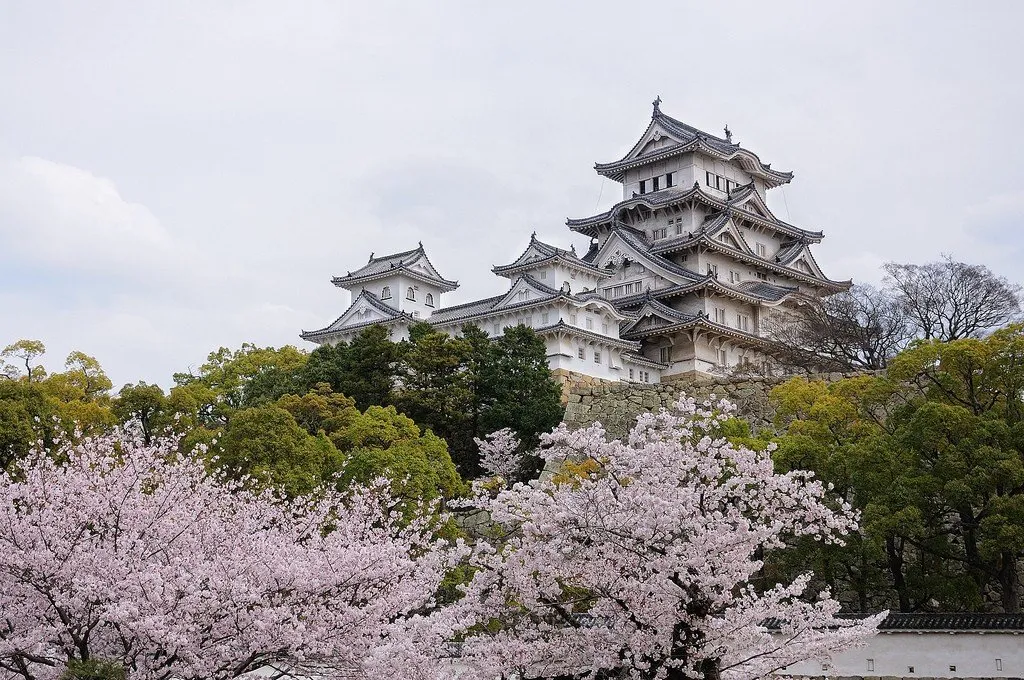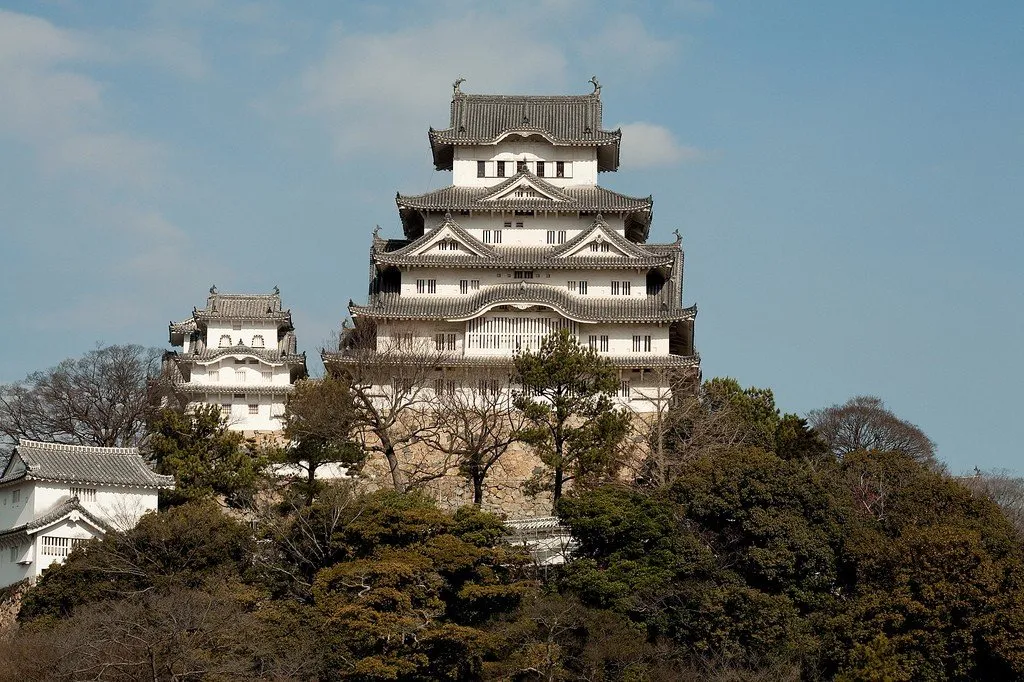Himeji Castle is the largest and most elegant of Japan's top ten medieval castles and the only one still in its original state. Translated from Japanese, "Himeji" means "white heron" - hence the other name of the castle - White Heron Castle. In total, the castle complex includes 83 buildings, almost all of them are built of wood. Himeji Castle stands proudly above the Senba-gawa River, and at its foot lies the city of the same name.
 |
| Himeji Castle |
General Information
Since the birth of cinema, many famous films have been filmed on the territory of the castle of the white heron. For example, the cult Japanese director Akira Kurosawa filmed his legendary films “Shadow of the Warrior” and “Ran” here. In one of the Bond series, Himeji Castle took on the role of a secret ninja school in which rockets were developed. In 2003, Himeji opened his doors to filming the now famous historical saga The Last Samurai.
 |
| Himeji Castle |
The fragile appearance of Himeji Castle is deceiving. This is one of the features of its architecture. The roofs of the buildings are made of rather thick wood boards. At first glance, the walls of the structure are thin, built of compressed clay, which gives them the ability to withstand direct hits from projectiles. The castle has two defensive lines, a pair of ditches, as well as small fortified gates and walls. If the enemy broke through the first gate, then he found himself directly in front of the second, which were surrounded by the defenders of Himeji. There is also a real trap in the form of a false gate. When the attackers tried to capture the main citadel of the fortress, climbing up its walls, the defenders could easily pour boiling oil on the heads of the enemy. There are loopholes everywhere on the inner and outer sides of the walls. Plus to all of the above, on enemies, A hail of arrows flew from all sides trying to capture the fortress. Thus, there was simply no escape for the attackers on the castle. The main gate of the central tower has always been impregnable - it is impossible to set fire to them because of the iron fittings.
 |
| Himeji Castle |
The architectural elegance and fragility of the palace is only the outer manifestation of Himeji Castle. Inside, he is completely different. This is a very dark and even sinister place. Its upper levels resemble a labyrinth, where there are no obvious passages, and the stairs change direction every now and then. Everything was done so with one goal - to confuse the attackers as much as possible.
Himeji Castle has another excellent means of defense - mental influence on the enemy. Here you can’t be sure of anything, and outwardly everything seems completely different from what it turns out to be in reality. Overt and covert defense mechanisms are hidden everywhere. Thus, throughout its history, Himeji Castle has never been stormed or even besieged. For the most part, it was used as a means of intimidating the enemy. And very successfully.
History
The construction of the castle began in the middle of the 14th century (Muromachi period). “It got its name for the special sharpness of forms and elegance, reminiscent of a beautiful snow-white bird.” Himeji served as a revered model for countless castles of subsequent generations. Its high stone foundation, carefully whitewashed walls, loopholes, embrasures have firmly entered the arsenal of Japanese architecture techniques.
The original castle built in 1333-1346 passed from one samurai clan to another more than once, especially during the civil war of 1467-1477. By the end of the 16th century, when it was in the hands of the military leader Toyotomi Hideyoshi, the castle was pretty battered by civil strife and required major repairs. It was in the interval between 1601 and 1609 that almost all of its current structures appeared, above which a seven-tiered main tower rose to a height of 45 meters.
Started by the Toyotomi family, the renovation of the castle was completed by 1618 and led to the appearance of a whole bunch of auxiliary turrets, as well as to the redevelopment of the surrounding area. The extensive garden around the castle is laid out in a spiraling labyrinth with many dead ends, in order to force the attackers to wander around in circles for hours while being fired upon with tenshū.
This ingenious idea never passed the test of battle, since after the completion of construction in this part of Japan, relatively peaceful times came. Over the next two centuries, the town of Himeji grew up under the shadow of the castle. In 1871, the Egret Castle was seized from the owners and sold for 23 yen. At the end of World War II, the surroundings of the castle suffered from the bombing of American aircraft, but he himself remained unscathed.
Currently, the main tower of the castle is closed for restoration. Access to the rest of the territory is allowed, but the view is not as impressive. Within the limits of the restoration scaffolding, an exposition dedicated to the repair work was made. The restoration will be completed at the end of 2014.
Himeji Castle was inscribed on the UNESCO World Heritage List in 1993.
 |
| Himeji Castle |
Tourists
Himeji is a four-hour train ride from Tokyo. A small entrance fee includes a guided tour in English. An hour's drive from Himeji, in a picturesque corner of Kyoto, is the Golden Pavilion - a beautiful Buddhist temple, and in Matsumoto - one of the largest castles in Japan.
A single ticket is also offered to visit Himeji Castle and the nearby excellent Koko-en Landscape Garden (daily May - August 9.00-18.00, September-April 9.00-17.00), created in 1992 by a master gardener from Kyoto on the site of a former samurai residence. In essence, Koko-en includes nine distinctive gardens, each with its own theme: bamboo, pine trees, seedlings, deciduous trees, flowers, etc.
The castle is open daily (June-August 9.00-17.00, September-May 9.00-16.00).
